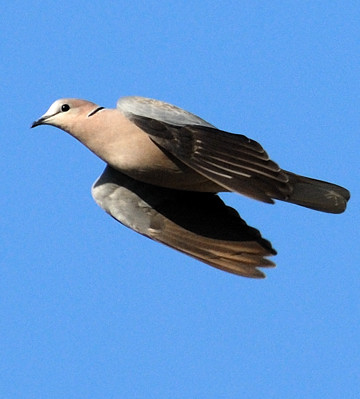 |
| Ring-necked Dove (Cape Turtle Dove) in Tarangire, photo from here |
Two more challenges have been set since the last one, and I'm hoping to rise to each! The first was for the African Collared Dove, however that species (
Streptopelia roseogrisea) from the drier north of Africa in the Sahel and in the Middle East is not found in Eastern or Southern Africa and I suspect request was for a Ring-necked Dove
Streptopelia capicola which is indeed one of the commonest birds to be seen in the bush across much of Africa.
The sound of the
Ring-necked Dove is one of the constant backgrounds to a safari in the bush (if you don't know it, the "work harder, drink lager" refrain is
available here) and it's actually this distinctive song that is the easiest way to identify the species from among a number of confusingly similar species. The ring-necked dove is a medium sized, grey dove. It has a black collar around the back of its neck and is a paler grey white below, with pale edges to its tail. Unfortunately, that description is would cover just about any of the close relatives of this species, and (as well as listening to the calls) you need to look rather closer to identify the species correctly. Firstly, look at the eye: if it is dark and not obviously surrounded by bare skin, you're probably looking at a Ring-necked Dove. White (not grey) edges to the tail and a generally pale grey would confirm the identity in eastern and southern Africa. If the eye is pale yellowish, with a red ring around it and there's a warmer brownish wash to the back and neck that contrasts with a grey head, you're probably looking at an African Mourning Dove (
call) and if its got a dark eye in a bare purple/red patch of skin, and is overall darker looking, with grey tail edges, you're looking at a Red-eyed Dove (
call: "I am a Red-eyed Dove").



